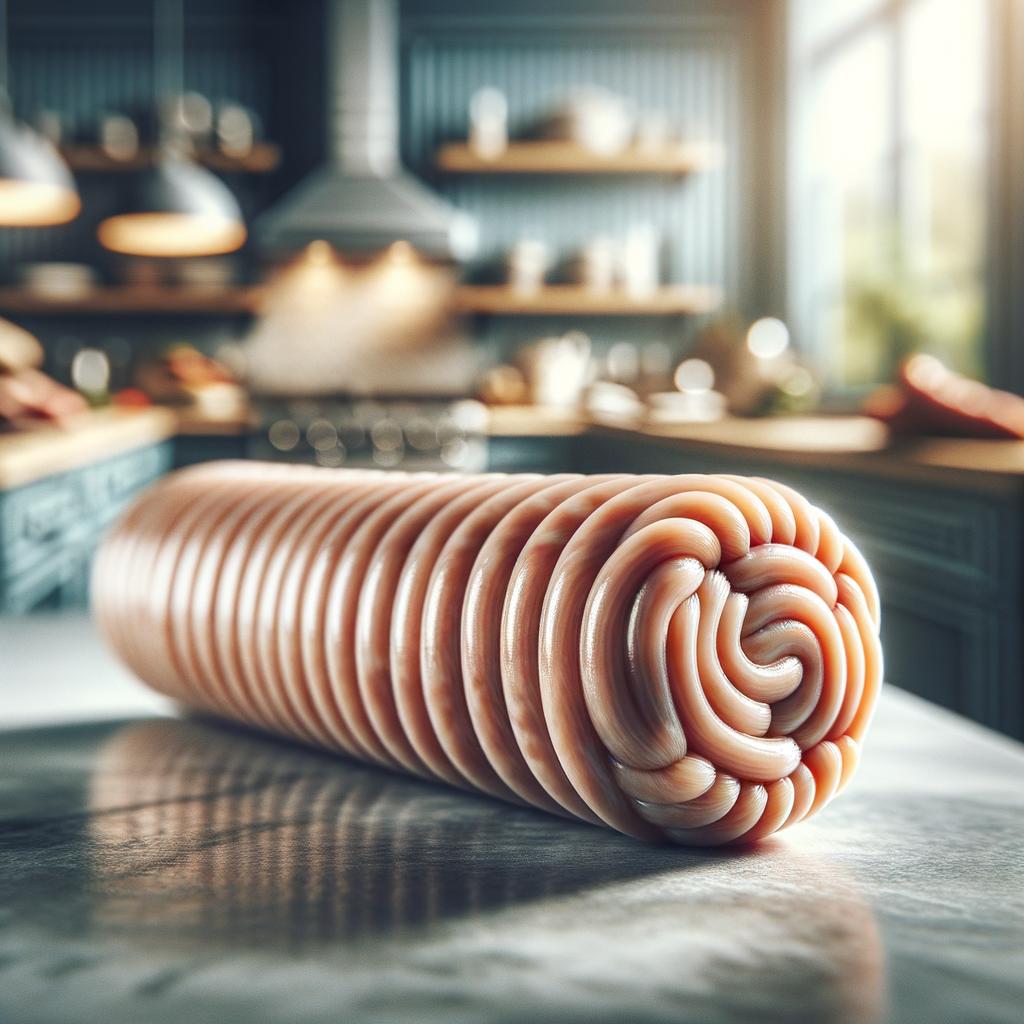Sausage Casing

Description
The sausage casing, often overlooked yet undeniably essential, is the thin material that forms the outer layer of sausages. Traditionally, casings were made from the intestines of animals, typically pigs, sheep, and cows. These natural casings are semi-transparent, flexible, and have a slightly glossy appearance. They are prized for their strength, elasticity, and ability to allow flavors to permeate through. The texture is smooth, yet firm enough to hold the sausage filling securely. The flavor profile of these casings is subtle, designed to complement rather than overpower the rich, savory flavors of the sausage meat. What sets sausage casings apart is their versatility - they can be used with a variety of fillings, from the traditional meat-based fillings to the more modern vegetarian and vegan alternatives.
Primary Uses
Sausage casings are primarily used in the making of sausages, an integral part of cuisines around the world. From the spicy chorizo of Spain to the hearty bratwurst of Germany, the humble sausage casing plays a starring role. In addition to sausages, casings are also used in the preparation of other delicacies such as haggis and black pudding. Non-culinary uses of sausage casings are limited, although historically, they have been used in the manufacture of strings for musical instruments.
History
The history of sausage casings is as rich and diverse as the cultures that use them. They date back to the times when our ancestors first began to domesticate animals. The practice of using animal intestines as casings to preserve and cook food is thought to have originated in the Middle East around 5000 BC. Over the centuries, the use of sausage casings spread across the globe, each culture adding its unique twist to the preparation and stuffing of sausages. There's a charming myth in Germany that sausages were invented by a butcher who, in a bid to save his meat from a fire, stuffed it into a cleaned pig's intestine. Today, while synthetic alternatives are available, many traditionalists still prefer natural casings for their superior flavor and texture.
Nutritional Information
Sausage casings, especially those made from animal intestines, are rich in protein and collagen. They also contain a small amount of fat, which contributes to the overall flavor of the sausage. However, as they are consumed in small amounts, their nutritional contribution to the diet is minimal. Natural casings are a healthier alternative to synthetic ones, as they are free from artificial preservatives and additives. They also provide a source of dietary collagen, which is beneficial for skin and joint health. Compared to synthetic casings, natural ones have a higher nutritional value and offer a more authentic taste experience.

